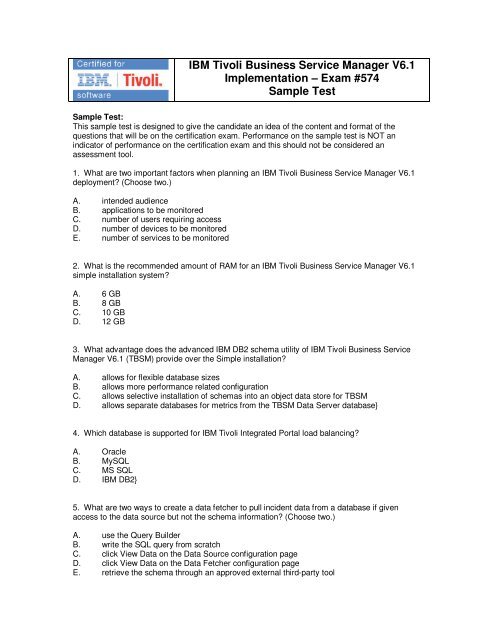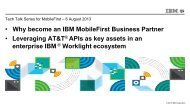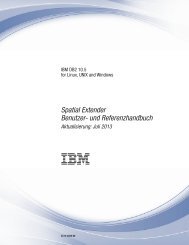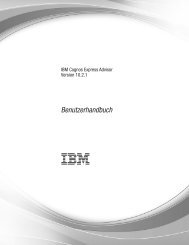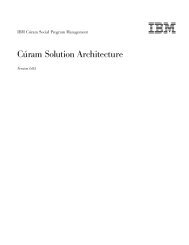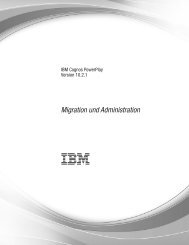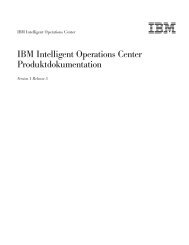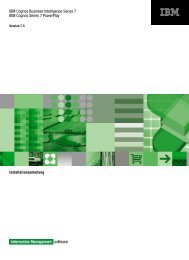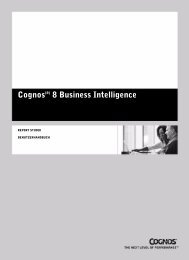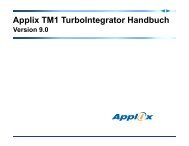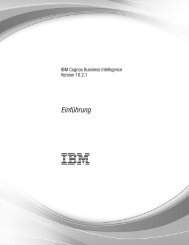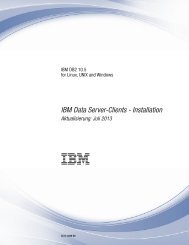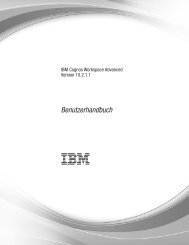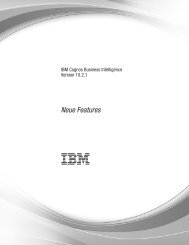You also want an ePaper? Increase the reach of your titles
YUMPU automatically turns print PDFs into web optimized ePapers that Google loves.
IBM Tivoli Business Service Manager V6.1<br />
Implementation – <strong>Exam</strong> <strong>#574</strong><br />
<strong>Sample</strong> <strong>Test</strong><br />
<strong>Sample</strong> <strong>Test</strong>:<br />
This sample test is designed to give the candidate an idea of the content and format of the<br />
questions that will be on the certification exam. Performance on the sample test is NOT an<br />
indicator of performance on the certification exam and this should not be considered an<br />
assessment tool.<br />
1. What are two important factors when planning an IBM Tivoli Business Service Manager V6.1<br />
deployment? (Choose two.)<br />
A. intended audience<br />
B. applications to be monitored<br />
C. number of users requiring access<br />
D. number of devices to be monitored<br />
E. number of services to be monitored<br />
2. What is the recommended amount of RAM for an IBM Tivoli Business Service Manager V6.1<br />
simple installation system?<br />
A. 6 GB<br />
B. 8 GB<br />
C. 10 GB<br />
D. 12 GB<br />
3. What advantage does the advanced IBM DB2 schema utility of IBM Tivoli Business Service<br />
Manager V6.1 (TBSM) provide over the Simple installation?<br />
A. allows for flexible database sizes<br />
B. allows more performance related configuration<br />
C. allows selective installation of schemas into an object data store for TBSM<br />
D. allows separate databases for metrics from the TBSM Data Server database}<br />
4. Which database is supported for IBM Tivoli Integrated Portal load balancing?<br />
A. Oracle<br />
B. MySQL<br />
C. MS SQL<br />
D. IBM DB2}<br />
5. What are two ways to create a data fetcher to pull incident data from a database if given<br />
access to the data source but not the schema information? (Choose two.)<br />
A. use the Query Builder<br />
B. write the SQL query from scratch<br />
C. click View Data on the Data Source configuration page<br />
D. click View Data on the Data Fetcher configuration page<br />
E. retrieve the schema through an approved external third-party tool
6. When creating an auto-population rule what is the purpose of the Incoming Status Rule?<br />
A. It triggers the External Service Dependency Adapter (ESDA) rule for lowest level<br />
template in a service hierarchy to auto-create service instances.<br />
B. It triggers the ESDA rule for the highest level template in a service hierarchy to autocreate<br />
service instances.<br />
C. It triggers the auto-population rule for the lowest level template in a service hierarchy to<br />
auto-create service instances.<br />
D. It triggers the auto-population rule for the highest level template in a service hierarchy to<br />
change the state of a service instance.<br />
7. What is the maximum number of values in the Available Elements that can be shown when<br />
customizing the indicators?<br />
A. 4<br />
B. 6<br />
C. 8<br />
D. 10<br />
8. What are two requirements in order to view Tivoli Common Reporting reports on historical<br />
service status? (Choose two.)<br />
A. an IBM Tivoli Business Service Manager (TBSM) Dashboard Server<br />
B. Tivoli Common Reporting installed on the TBSM Data Server<br />
C. Tivoli Common Reporting installed on any server<br />
D. the IBM Tivoli Monitoring agent for TBSM<br />
E. IBM Tivoli Netcool/OMNIbus Reporter}<br />
9. Which command stops the IBM Tivoli Business Service Manager V6.1 services on UNIX prior<br />
to a restore?<br />
A. fo_config<br />
B. tbsm_stop<br />
C. tbsm_quiesce<br />
D. tbsm_suite.sh stop<br />
10. What is the default logging and tracing level for IBM Tivoli Business Service Manager V6.1?<br />
A. *=info: com.ibm.tbsm.*=fine: com.micromuse.*=fine<br />
B. *=info: com.ibm.rad.*=fine: com.micromuse.*=fine: com.ibm.tivoli.twa.marker.*=fine<br />
C. *=info: com.ibm.tbsm.*=fine: com.micromuse.*=fine: com.ibm.tivoli.twa.marker.*=fine<br />
D. *=info: com.ibm.tbsm.*=info: com.micromuse.*=info: com.ibm.tbsm.twa.marker.*=fine
Answer Key:<br />
1. AE<br />
2. D<br />
3. D<br />
4. D<br />
5. AE<br />
6. C<br />
7. B<br />
8. CD<br />
9. D<br />
10. C


